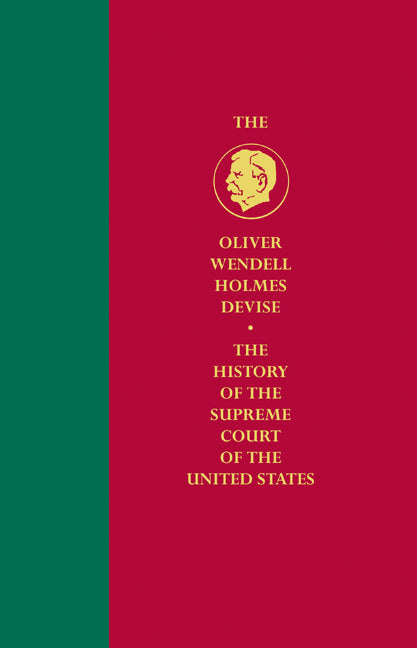Freshly Printed - allow 8 days lead
Couldn't load pickup availability
History of the Supreme Court of the United States
The Taney Period, 1836–1864 offers a comprehensive analysis of the leading constitutional issues addressed by the United States Supreme Court during Roger B. Taney's tenure as chief justice of the Court.
Carl B. Swisher (Author)
9780521519793, Cambridge University Press
Hardback, published 23 November 2009
1066 pages, 32 b/w illus.
24 x 16 x 5.5 cm, 1.37 kg
'[Carl B. Swisher's] grasp, judiciousness, and professional integrity are all plainly visible in The Taney Period, and his style is characteristically crisp and clear … [F]or anyone interested in the Court as a functioning institution and in the mixture of personalities constituting its membership, this is at once a book that can be read through with considerable pleasure and a useful reference work to be kept close at hand.' Don E. Fehrenbach, The University of Chicago Law Review
The Taney Period, 1836–1864, by Carl B. Swisher, is the fifth volume of the Oliver Wendell Holmes Devise History of the Supreme Court of the United States. The volume opens with Roger B. Taney's appointment as chief justice of the Court, describing the Taney Court and its personnel. Later chapters offer a comprehensive analysis of the leading constitutional issues addressed by the United States Supreme Court during this period. Swisher covers the Taney Court's decisions on commerce power, admiralty and maritime jurisdiction, the rights of corporations, patent rights and free enterprise, and legal decisions relating to slavery, including a detailed analysis of the Dred Scott decision and its aftermath. The volume ends with the close of the Taney Period, which coincided with cases and constitutional issues related to the Civil War, including Lincoln's appointments to the Supreme Court, Northern nullification, and wartime curtailment of civil rights.
1. The background of the Taney Court
2. The Taney appointment
3. Personnel of the Taney Court
4. The first term and the Bridge Case
5. The realm of finance
6. Hard times and contract obligations
7. The scope of executive power
8. The impact of foreign affairs
9. Politics and personnel
10. The judges and the circuits
11. The expanding work load
12. The clerk and the reporter
13. Federal courts and the common law
14. Fringes of the codification movement
15. The control of commerce
16. The continuing struggle over commerce
17. The developing pattern of the commerce power
18. Admiralty and maritime jurisdiction
19. The rights of corporations
20. Patent rights and free enterprise
21. Political questions and judicial power
22. Sectionalism and slavery
23. Soil for slavery
24. The Dred Scott case
25. Aftermath of the Scott case
26. The Booth cases and Northern nullification
27. Fugitives from justice
28. The widening breach
29. The court on the eve of the war
30. Property in land
31. The wealth of El Dorado
32. Lincoln's appointments to the court
33. The war and the federal judges
34. The blockade and the laws of war
35. Wartime curtailment of civil rights
36. Other problems from the war
37. The end of the Taney regime.
Subject Areas: Laws of Specific jurisdictions [LN], Modern history to 20th century: c 1700 to c 1900 [HBLL]


